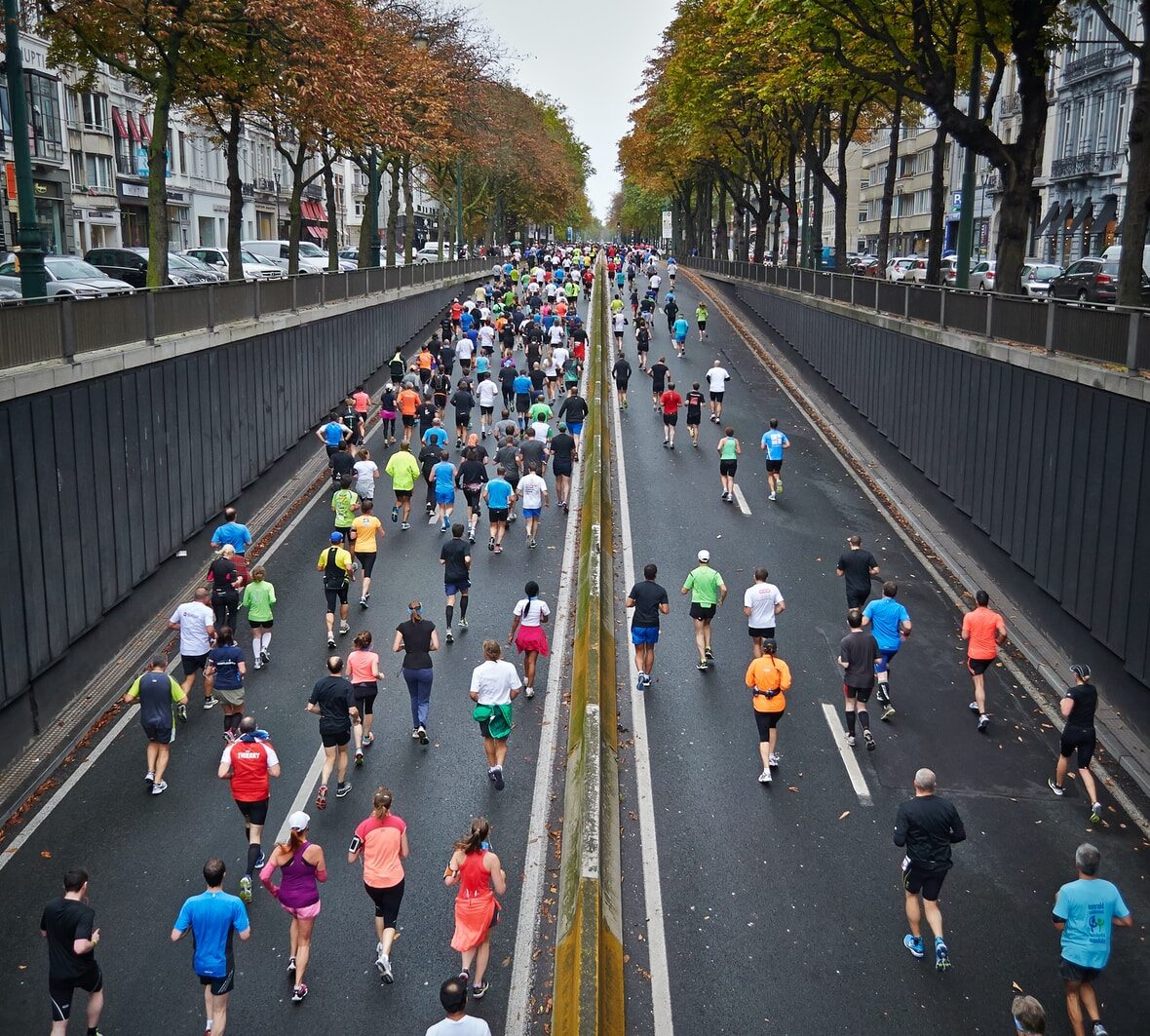
Have you ever wondered what a walkathon truly entails? This engaging fundraising event combines fitness, community spirit, and a dash of fun, making it a popular choice for charities and organizations worldwide. In fact, did you know that the first recorded walkathon raised over $85,000 for cancer research back in 1953? That’s right! Walkathons not only promote physical health but also foster a sense of community and purpose.
In this article, we’ll explore the ins and outs of walkathons, including their history, benefits, and how you can get involved. Whether you’re thinking of participating or organizing your own event, we’ve got you covered with essential tips and insights. So, lace up your walking shoes and get ready to step into the world of walkathons!
Key Takeaways
- Definition: A walkathon is a fundraising event where participants walk a specific distance to raise money for a cause.
- Health Benefits: Walking improves cardiovascular health, boosts mood, and aids in weight management.
- Community Engagement: Walkathons foster connections and support local charities, enhancing community spirit.
- Organizing Tips: Successful walkathons require careful planning, promotion, and volunteer support.
- Notable Events: Some famous walkathons include the AIDS Walk and the Breast Cancer 3-Day.
Ready to gear up for your next walkathon? Check out our recommended walking shoes and apparel from top brands like New Balance and Asics to ensure you’re comfortable and stylish on your journey!
Table of Contents
Quick Tips and Facts
What is a Walkathon? Understanding the Basics
The Evolution of Walkathons: A Historical Perspective
Why Participate in a Walkathon? Benefits for You and the Community
Notable Walkathons Around the World: Inspiring Events
How to Organize a Successful Walkathon: Tips and Tricks
Walkathon vs. Other Fundraising Events: What’s the Difference?
The Impact of Walkathons on Health and Fitness
Walkathon Gear Essentials: What You Need to Succeed
Walkathon Etymology: The Origins of the Term
Conclusion
Recommended Links
FAQ
Reference Links
Quick Tips and Facts
- What is a Walkathon? A walkathon is a community or school fundraiser where participants raise money by walking a predetermined distance, often through pledges or donations. 🚶♂️💰
- Health Benefits: Walking can improve cardiovascular health, boost mood, and aid weight management. Check out more on Health Benefits of Walking. 🏃♀️❤️
- Notable Events: Some famous walkathons include the AIDS Walk, Breast Cancer 3-Day, and March for Babies. 🌍
- First Walkathon: The first recorded walkathon took place in 1953 in San Juan, Puerto Rico, raising significant funds for cancer research. 📅
- Community Engagement: Walkathons foster community spirit and can be a fun way to engage with local causes. Learn more about this in our article on How Walkathons Foster Community Spirit and Fundraising for Schools. 🤝
What is a Walkathon? Understanding the Basics
A walkathon, also known as a walk-a-thon or walking marathon, is a non-competitive fundraising event where participants walk a specific distance to raise money for a cause. Unlike traditional marathons, walkathons are designed for people of all ages and fitness levels, making them accessible and inclusive.
Key Features of Walkathons
- Fundraising Model: Participants often collect pledges from family and friends, promising to donate a certain amount for each mile walked.
- Community Focus: Walkathons often support local charities, schools, or health initiatives, fostering a sense of community and purpose.
- Health Promotion: They encourage physical activity, making them a great way to promote health and wellness in the community.
The Evolution of Walkathons: A Historical Perspective
The concept of the walkathon dates back to the 1930s, but the first significant event was held in 1953 in San Juan, Puerto Rico. Ramón Rivero, known as “Diplo,” walked 80 miles to raise money for cancer research, raising the equivalent of $85,000 in just four days! This event set the stage for future walkathons, which have since evolved into large-scale fundraising activities.
Milestones in Walkathon History
| Year | Event | Details |
|---|---|---|
| 1953 | First Walkathon | San Juan, Puerto Rico, raised funds for cancer research. |
| 1968 | First U.S. Walkathon | Organized by the American Freedom from Hunger Foundation in Minneapolis. |
| 1971 | Largest National Walkathon | Over 150,000 participants raised $1.2 million to fight hunger. |
| 2014 | World Record Walkathon | 175,000 participants in Manila for Typhoon Yolanda relief. |
Why Participate in a Walkathon? Benefits for You and the Community
Participating in a walkathon offers numerous benefits, both personally and for the community. Here’s why you should consider joining one:
Personal Benefits
- Physical Health: Walking improves cardiovascular fitness, strengthens muscles, and enhances overall well-being. 🏋️♂️
- Mental Health: Engaging in physical activity releases endorphins, reducing stress and anxiety. 🌈
- Social Connections: Walkathons provide an opportunity to meet new people and strengthen community ties. 🤗
Community Benefits
- Fundraising for Causes: Funds raised often support vital community projects, such as health initiatives, education, and social services.
- Awareness Raising: Walkathons can bring attention to important issues, fostering community engagement and activism. 📢
Notable Walkathons Around the World: Inspiring Events
Here are some of the most notable walkathons that have made a significant impact:
- AIDS Walk: Held in various cities, this walk raises funds for HIV/AIDS services and awareness.
- Breast Cancer 3-Day: Participants walk 60 miles over three days to support breast cancer research and treatment.
- March for Babies: Aimed at improving the health of mothers and babies, this event raises funds for research and programs.
These events not only raise funds but also create a sense of solidarity among participants and communities.
How to Organize a Successful Walkathon: Tips and Tricks
Thinking of organizing your own walkathon? Here’s a step-by-step guide to ensure success:
Step 1: Define Your Purpose
- Choose a Cause: Decide what you’re raising funds for (e.g., local charity, school project).
- Set Goals: Determine how much money you aim to raise.
Step 2: Plan the Logistics
- Select a Date and Location: Choose a venue that is accessible and safe for participants.
- Create a Route: Map out a clear path for walkers, ensuring it’s well-marked and monitored.
Step 3: Promote Your Event
- Use Social Media: Create an event page and share it across platforms.
- Engage Local Media: Reach out to local newspapers and radio stations to promote your event.
Step 4: Registration and Pledges
- Online Registration: Use platforms like Eventbrite to manage registrations.
- Pledge Collection: Set up a system for participants to collect pledges easily.
Step 5: Day of the Event
- Volunteer Support: Recruit volunteers to help with setup, registration, and guiding participants.
- Celebrate Participation: Provide refreshments and recognition for participants to foster a positive atmosphere. 🎉
Walkathon vs. Other Fundraising Events: What’s the Difference?
While walkathons share similarities with other fundraising events, they stand out in several ways:
| Aspect | Walkathon | Other Fundraising Events |
|---|---|---|
| Intensity | Low to moderate | Varies (can be high-intensity) |
| Accessibility | Open to all ages and fitness levels | May have age or skill restrictions |
| Community Focus | Strong emphasis on local causes | Can vary widely in focus |
| Health Benefits | Promotes physical activity | Not always health-related |
Walkathons are unique in their ability to combine fitness, community engagement, and fundraising, making them a popular choice for many organizations.
The Impact of Walkathons on Health and Fitness
Walkathons are not just about raising money; they also play a significant role in promoting health and fitness.
Health Statistics
- Regular Walking: Studies show that walking regularly can reduce the risk of chronic diseases, improve mental health, and enhance overall quality of life. CDC Walking Facts 📊
- Community Health: Events like walkathons can lead to increased community physical activity levels, fostering a healthier population.
Personal Anecdotes
Many participants share transformative stories about how walkathons have motivated them to adopt healthier lifestyles. For example, one participant reported losing 20 pounds after committing to training for a local walkathon! 🎉
Walkathon Gear Essentials: What You Need to Succeed
To ensure a successful and enjoyable walkathon experience, having the right gear is crucial. Here’s a list of essentials:
| Gear | Description |
|---|---|
| Comfortable Shoes | Invest in quality walking shoes like New Balance or Asics for support. |
| Weather-Appropriate Clothing | Dress in layers and choose moisture-wicking fabrics. |
| Hydration Gear | Carry a reusable water bottle or hydration pack to stay hydrated. |
| Sunscreen and Hat | Protect yourself from the sun, especially during outdoor events. |
Recommended Brands
- Shoes: New Balance | Asics
- Clothing: Nike | Under Armour
- Hydration Packs: CamelBak
Walkathon Etymology: The Origins of the Term
The term “walkathon” is a portmanteau of “walk” and “marathon,” first appearing in the 1930s. It reflects the event’s dual purpose of promoting walking as a healthy activity while also serving as a fundraising marathon for various causes.
As walkathons gained popularity, they became synonymous with community engagement and charitable fundraising, evolving into the events we know today.
Conclusion

Walkathons are more than just a walk in the park; they are a powerful blend of community spirit, health promotion, and fundraising. Whether you’re participating or organizing, the benefits are immense—both for you and the causes you support. So, lace up those shoes and join the movement! 🚶♀️💪
Recommended Links
- Health Benefits of Walking
- Physical Fitness Tips
- Fundraising Strategies
- Event Registration Tips
- Community Engagement
FAQ
-
What is the average distance for a walkathon?
- Most walkathons range from 5K (3.1 miles) to 10K (6.2 miles), but distances can vary.
-
Can anyone participate in a walkathon?
- Yes! Walkathons are designed to be inclusive for all ages and fitness levels.
-
How do I fundraise for a walkathon?
- Participants typically collect pledges from friends and family based on the distance they walk.
Reference Links
Conclusion

In summary, walkathons are a fantastic way to combine fitness, community engagement, and fundraising for important causes. They provide participants with the opportunity to improve their health while supporting local charities and initiatives. With a rich history and a proven track record of success, walkathons continue to inspire individuals and communities alike.
Key Takeaways:
- Health Benefits: Regular walking enhances physical and mental well-being.
- Community Spirit: Walkathons foster connections and support local causes.
- Accessibility: Open to all ages and fitness levels, making it easy for everyone to participate.
So, whether you’re considering joining a walkathon or organizing one, remember that you’re not just walking; you’re making a difference! Lace up those shoes and step into a healthier, more connected community! 🚶♂️💖
Recommended Links
-
👉 Shop Walkathon Gear:
- New Balance Shoes: Amazon | New Balance Official
- Asics Shoes: Amazon | Asics Official
- Nike Apparel: Amazon | Nike Official
- Under Armour Apparel: Amazon | Under Armour Official
- CamelBak Hydration Packs: Amazon | CamelBak Official
-
Books on Walkathons:
- The Complete Guide to Fundraising Walks – A comprehensive resource for organizing successful walkathons.
- Walking for Health and Fitness – Tips and strategies to maximize your walking experience.
FAQ

What is the purpose of a walkathon?
A walkathon serves multiple purposes, primarily fundraising for charitable causes, raising awareness about specific issues, and promoting physical activity within the community. It encourages participants to engage in a healthy lifestyle while supporting a cause they care about.
Read more about “What is the purpose of a walkathon?”
How do walkathons raise money?
Walkathons raise money through participant pledges, where individuals collect donations from friends, family, and community members based on the distance they walk. Some events may also include registration fees, sponsorships from local businesses, and merchandise sales.
Read more about “How do walkathons raise money?”
What are the benefits of participating in a walkathon?
Participating in a walkathon offers numerous benefits, including:
- Physical Health: Improves cardiovascular fitness and overall health.
- Mental Well-being: Reduces stress and enhances mood through physical activity.
- Community Engagement: Fosters connections with others and supports local causes.
Read more about “How Walkathons Foster Community Spirit and Fundraising for Schools 🌟”
How do I organize a successful walkathon?
To organize a successful walkathon, follow these steps:
- Define your purpose and set fundraising goals.
- Plan logistics, including date, location, and route.
- Promote the event through social media and local media outlets.
- Manage registrations and pledge collections effectively.
- Ensure volunteer support on the event day for a smooth experience.
Read more about “Can Participating in a Walkathon Boost Students’ Teamwork & Social Skills? 🚶♀️ …”
What are some creative walkathon themes?
Creative themes can make your walkathon more engaging. Consider themes like:
- Color Run: Participants wear bright colors and get splashed with colored powder.
- Costume Walk: Encourage participants to dress up in fun costumes.
- Historical Walk: Incorporate local history into the route with informative stops.
What are the best fundraising strategies for walkathons?
Effective fundraising strategies include:
- Online Crowdfunding: Use platforms like GoFundMe to reach a wider audience.
- Corporate Sponsorships: Partner with local businesses for sponsorship opportunities.
- Incentives for Participants: Offer prizes for top fundraisers to motivate participants.
Read more about “How Walkathons Cultivate Lifelong Exercise Habits in Students 🚶♀️ …”
How can businesses support walkathons?
Businesses can support walkathons by:
- Sponsoring the Event: Providing financial support or in-kind donations.
- Encouraging Employee Participation: Organizing teams to participate in the walkathon.
- Promoting the Event: Sharing information through their networks and social media.
Read more about “Discover 15 Incredible Walkathon Benefits for Students That Will Inspire You! 🎉”
What is the average distance of a walkathon?
The average distance for a walkathon typically ranges from 5K (3.1 miles) to 10K (6.2 miles), but distances can vary based on the event’s goals and target audience.
Read more about “How Many Miles Is a Walkathon? 10 Essential Insights You Need! 🚶♂️”

